Starting in January, Amazon workers will be expected to work in the office five days a week. While most other companies are adapting to work-from-home schedules and even offering them as a benefit, Amazon is bucking the trend. From a macroeconomic standpoint, the question that is most important is whether Amazon successfully gets its entire workforce back into the office full time.
The job market remains robust. However, as we share below, job openings have steadily declined for two years, and the hiring rate is now at ten-year lows. Regarding Amazon employees, the trends indicate that they may not have an easy time saying no to Amazon. A recent survey by Blind, in which 2,585 Amazon employees were asked their sentiment regarding the full-time office plans, shows significant discontent. 91% of those questioned said they were dissatisfied with the coming office-only schedule. Moreover, 73% said they are considering another job because of the in-office policy.
Due to the trends we graph below, Amazon will likely retain most of its employees in January. But will they be as productive if their morale is lower? Amazon’s plan will be an interesting data point for the labor markets and corporate employers.
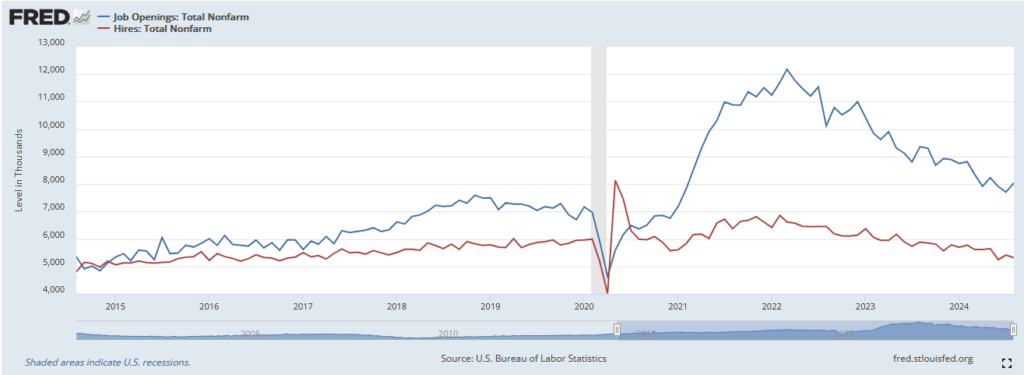
What To Watch Today
Earnings
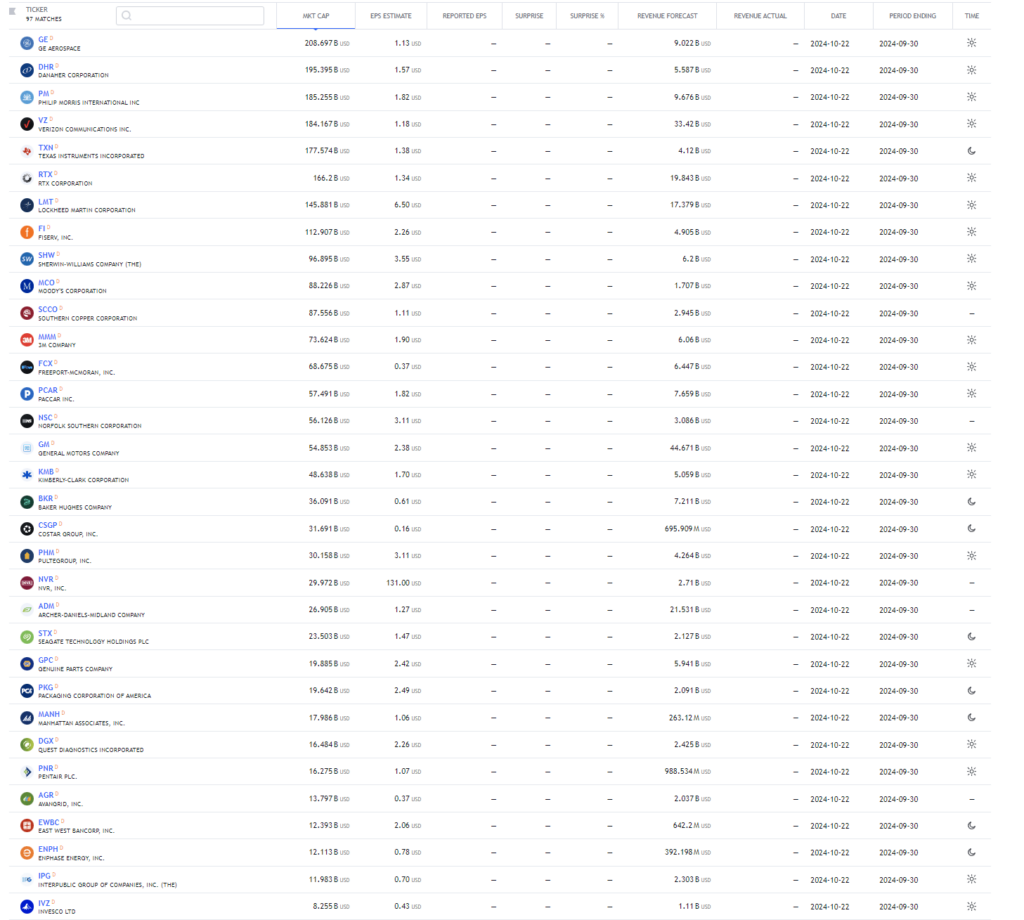
Economy

Market Trading Update
As noted yesterday, the market has triggered a “seasonal buy signal.” While that is certainly bullish and the subject of today’s blog post, there are risks to seasonality.
Despite the historical reliability of seasonality and the MACD buy signal, investors must still be aware of risks.
- Monetary Policy: Inflation, interest rates, and global economic uncertainty could weigh on stock performance, even during a seasonally strong period. Given the recent bout of strong data, if the Federal Reserve slows the pace of rate cuts, this could disappoint markets. A good example is 2018, where the Federal Reserve’s more hawkish stance preceded a 20% correction in November and December.
- Geopolitical Risks: Ongoing geopolitical tensions, whether in Eastern Europe, the Middle East, or relations between major economic powers, can quickly disrupt financial markets. Unexpected events, such as escalating conflicts or trade wars, could derail the seasonal trends.
- Market Volatility: Volatility can spike unexpectedly, leading to sharp market corrections. Even during strong periods like the “Best Six Months,” short-term market corrections are always possible. Investors should be prepared for heightened volatility, especially if other risk factors, like earnings surprises or economic data, create uncertainty.
- Historical Trends Are Not Guarantees: Past performance, while instructive, does not guarantee future results. Although the MACD buy signal has been a reliable indicator in the past, external factors could reduce its predictive power. Investors must be cautious and not rely solely on seasonality and technical signals.
Most crucially, the market has been up six weeks in a row, which historically is a very long stretch without a correction.

From a purely technical view, with the markets deviating well above MONTHLY moving averages and overbought, a correction or consolidation is becoming increasingly likely before the year-end advance can take shape.
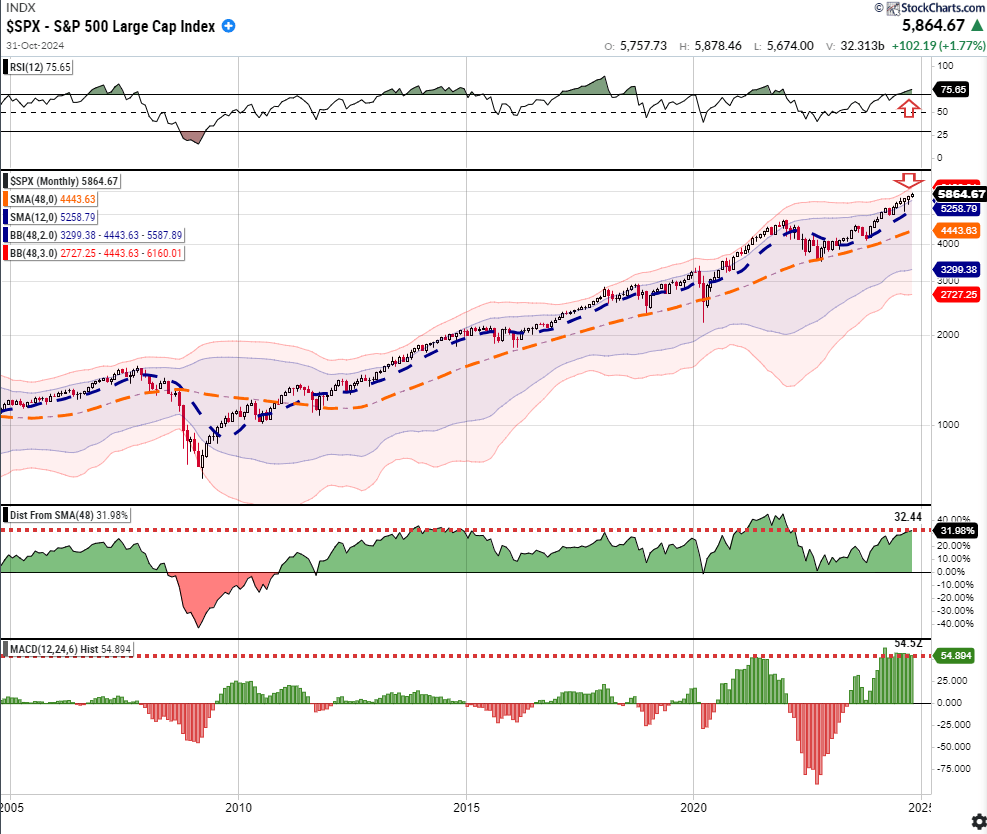
Navigating Into Year-End
With the S&P 500 now in a seasonally strong period, bolstered by the weekly MACD buy signal, investors may want to consider several strategies:
- Increase Equity Exposure: Large-cap stocks historically perform well during this period. You could consider increasing exposure to diversified index funds or sector ETFs that align with historical trends.
- Review Portfolio Risk: While the MACD buy signal is a positive indicator, you should assess your portfolio’s risk tolerance and ensure it aligns with your long-term goals.
- Rebalance Allocations: Now may be a good time to rebalance by reducing positions in riskier assets or diversifying across asset classes.
- Use Stop-Loss Orders: To manage downside risk, consider using stop-loss orders.
Yale Hirsch’s research on market seasonality, paired with the power of the MACD signal, offers a disciplined approach to navigating historical market trends. The recent MACD buy signal for the S&P 500 provides investors with a potentially advantageous entry point into the market as we head into the historically strong “Best Six Months” period. However, it’s crucial to remain aware of the risks, including macroeconomic headwinds and market volatility.
Trade accordingly.

Groceries Are Getting Cheaper
Not surprisingly, most people are very sensitive to the recent bout of inflation. However, we also find that they do not consider inflation on a relative basis. Double-digit inflation can be crippling, especially for the lower and middle classes. However, if wages keep up with inflation, the effect is minimal. For example, the graph below shows that it now takes about 3.5 hours of work to afford a week of groceries. That is down an hour from 1990 despite the price of groceries being up significantly.
That said, the graph has potential flaws. For starters, it uses average salary versus median. Furthermore, it doesn’t address the quality of food or the types of food people buy. We also presume it doesn’t fully capture “shrinkflation.” Lastly, how has the basket of groceries the BLS uses changed over time, and does that accurately reflect what the average consumer buys?
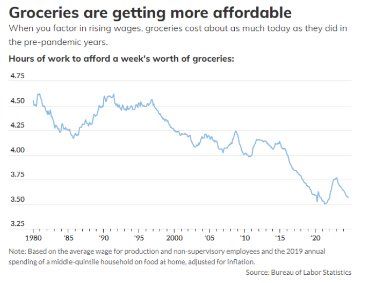
SimpleVisor Excess Return Analysis
On Tuesdays, we typically review the SimpleVisor sector and absolute technical scores to see which sectors or factors are overbought and oversold. This analysis allows us to forecast better which sectors or factors may lead or lag the broader market going forward. Today, we take that analysis a step further.
The first graphic shows that the healthcare sector is very oversold relative to the S&P 500. Moreover, it has an absolute score near zero despite the market hitting record highs. Note that many other sectors have absolute scores of moderately to highly overbought. If we wanted to shift our holdings toward healthcare and away from another sector, which sectors would likely give us the biggest bang for the buck doing this?
The second page below shows the correlation of excess returns for each sector. Remember, the excess return is the performance versus the S&P 500. Accordingly, the page compares the correlation of the two sector’s excess returns. So, if we scan down the healthcare sector (XLV) correlations, we find that XLV has a strong positive correlation with staples and a strong negative correlation with technology. Therefore, if one wants to add to healthcare and is looking for a sector to reduce, technology would be a likely choice. Moreover, staples could be a reasonable substitute if one wants to add to healthcare but worries about the political climate surrounding the sector heading into the election.
The third graphic helps us appreciate the current excess return relationship compared to the prior 21 and 63 days. One can argue that XLV is due for a bounce versus technology on a short-term basis. Still, over the more extended 63-day period, technology may likely continue to do better than healthcare.
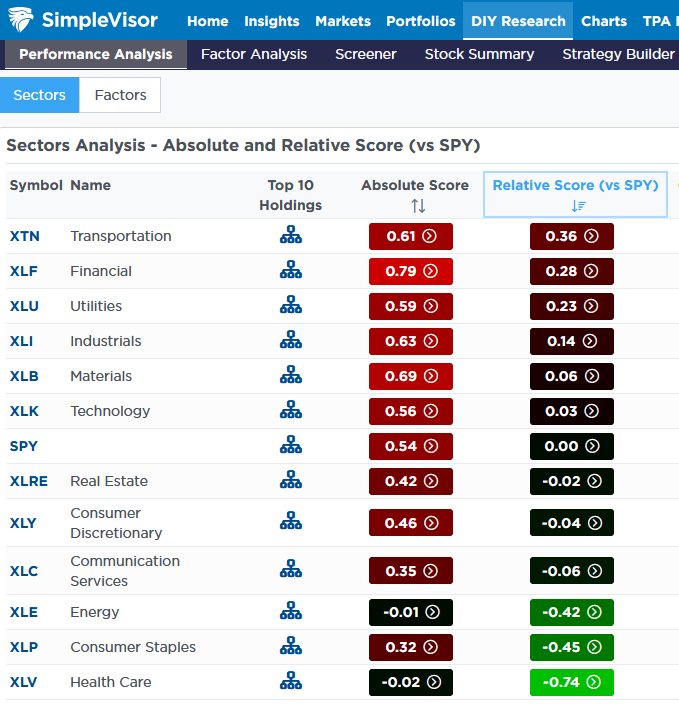
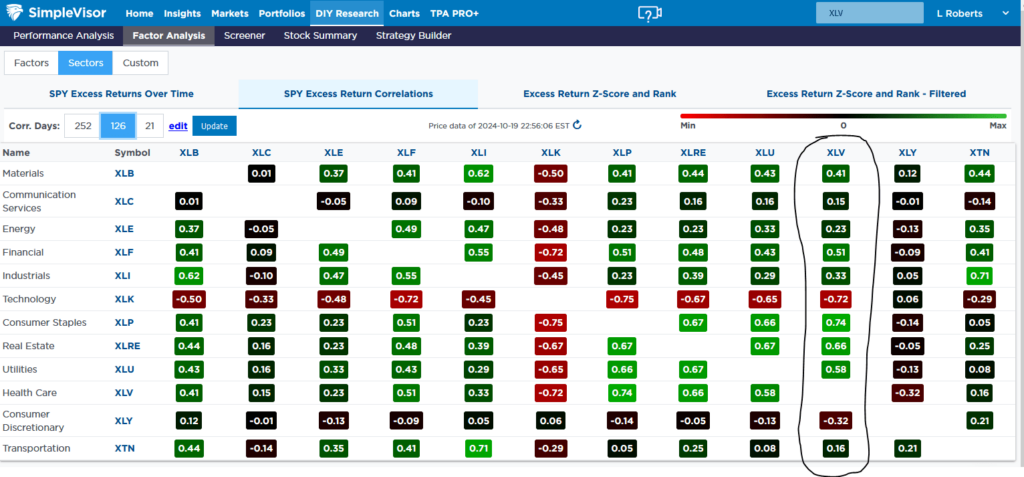
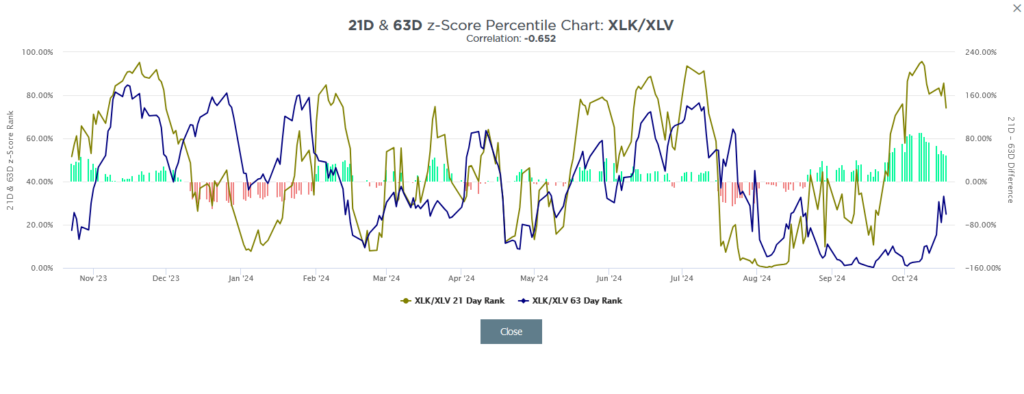
Tweet of the Day
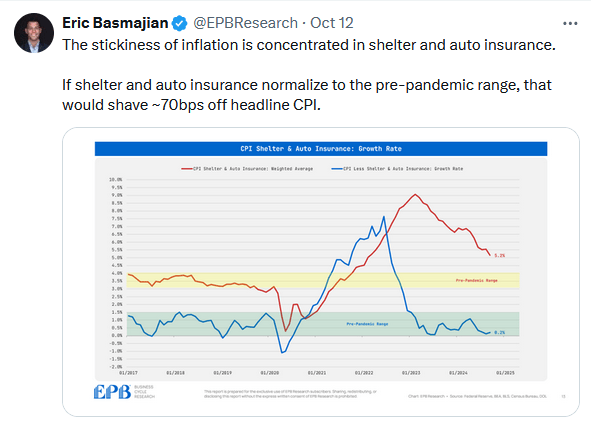
“Want to achieve better long-term success in managing your portfolio? Here are our 15-trading rules for managing market risks.”
Please subscribe to the daily commentary to receive these updates every morning before the opening bell.
If you found this blog useful, please send it to someone else, share it on social media, or contact us to set up a meeting.


